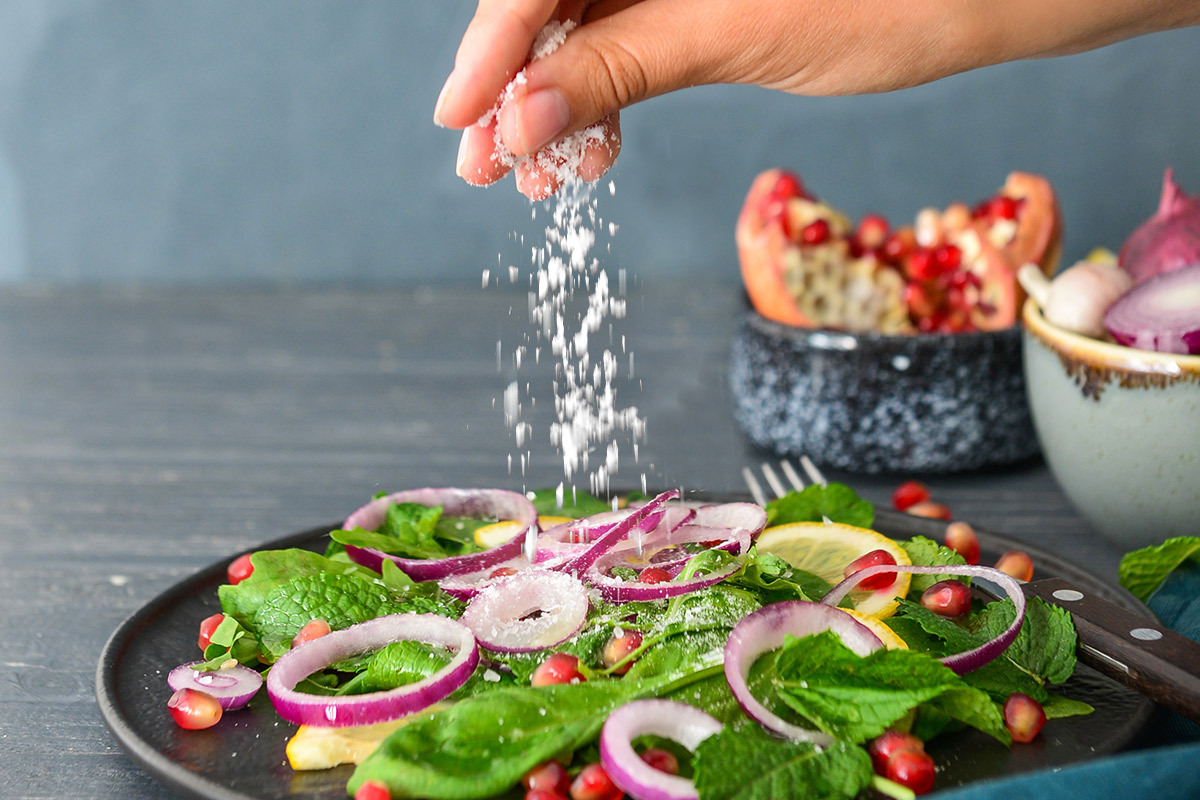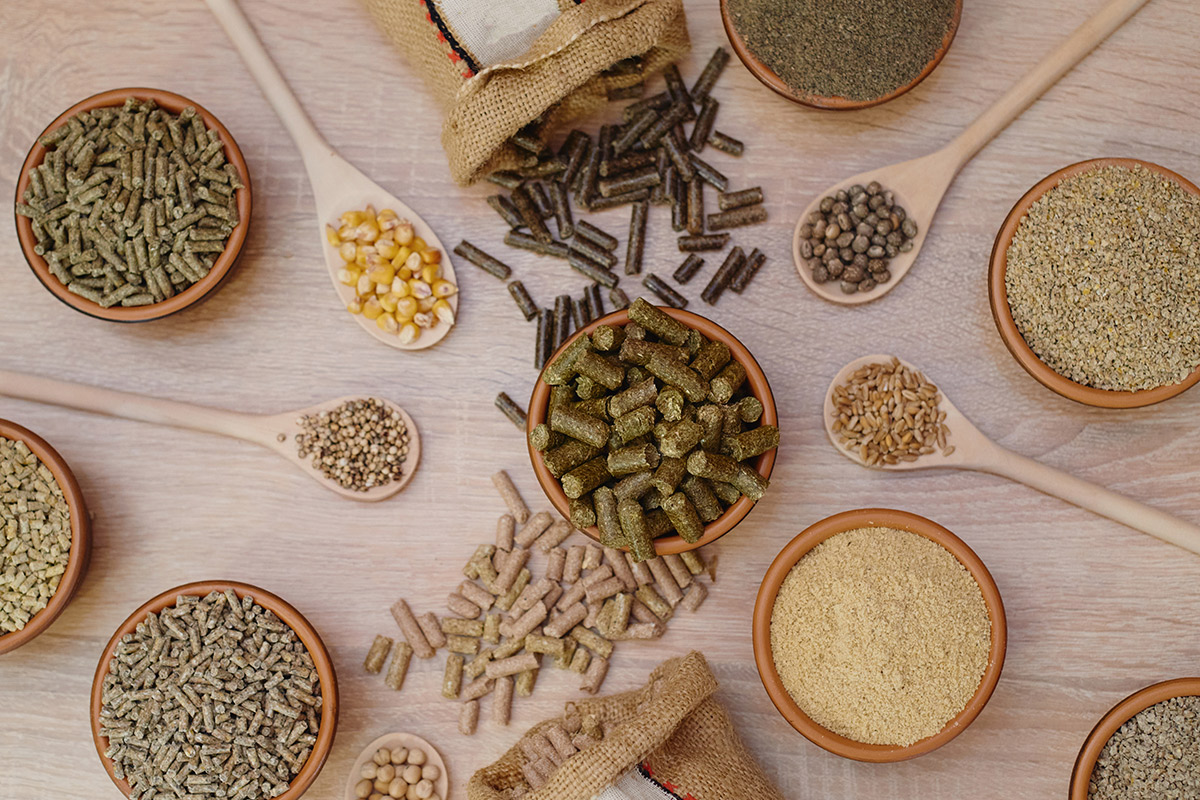The Continuing Salt Debate
There continues to be complete disagreement amongst experts on how much salt we should consume. Over recent years there have been many campaigns encouraging people to cut down their salt intake.
They have suggested that too much salt may damage our health and in particular, contribute to heart disease. However, what everyone needs to know is that our bodies cannot function properly without adequate salt – and recent research even suggests that consuming too little salt may actually increase the risk of heart disease.
Most of us don’t need to worry as a healthy body on a balanced diet will naturally excrete any excess unneeded salt.
Salt & Health: The Facts
Every gram of salt is made up from 40 per cent sodium and 60 per cent chlorine and both play a vital part in keeping our bodies functioning.
Sodium facilitates the transmission of nerve impulses around the body and regulates the electrical charges in and out of our cells. This means fluids and vital minerals can be passed into and out of each body cell depending on its individual needs. Sodium controls our taste and smell and helps our muscles contract, with the most important muscle of all being – the Heart.
While Sodium is essential for muscle and cell functionality, the Chloride part of Salt is essential in the digestion process. It is used in the production by the body of Hydrochloric Acid(HCI) in the stomach for digestion; it preserves the acid balance throughout the body and helps to carry carbon dioxide from tissues to the lungs.
So, what would happen if we took these vital functions away?
Well we wouldn’t feel very well. Our muscles would become weak and cramp, and we could suffer from heat exhaustion. Extremely low levels of salt can even be fatal.
Salt Intake & Your Health
Over recent years, a government-backed multi-million pound campaign encouraging people to cut down their salt intake gained a lot of media attention, highlighting the damaging effects too much salt has on our health.
Recent research suggests that consuming too little salt may actually increase the risk of heart disease. People need to know that by not getting enough, our bodies cannot function properly.
So Who is at Risk?
The straightforward answer is everyone, but there are a few who could be classed as at a ‘higher risk’ if they reduce their salt intake.
Pregnant women, the elderly and those who undertake regular periods of exercise are among the ‘high risk’ groups because their bodies are under pressure.
Exercising regularly as part of a healthy lifestyle can help protect us from heart disease and strokes, as well as keeping blood pressure constant, but as we build up a sweat we lose water and Sodium from our bodies.

Drinking Water
Drinking water before, during and after exercise can help to replace the lost water, but we need to replace the Sodium as well, or we run the risk of diluting our blood plasma, which is when our health is most at risk.
This is done quite naturally by the body extracting and retaining more Sodium and Chloride from the salt in the foods that we subsequently eat and drink. However, after exercise, the body may require additional sodium which is why many sports-people take salt tablets after heavy exercise.
Expectant mothers, especially towards the third trimester of pregnancy, can put their lives as well as the unborn child’s life at risk if the levels of salt in the body fall to a dangerous level.
Regulating the Body
This is because Sodium helps to regulate the amount of fluids in the body. However, if the mother has low salt levels in her body, evidence suggests that it could cause problems with blood volume in the unborn child and also can cause her own blood pressure to increase. (Low salt levels results in ‘thicker’ blood which leads to higher blood pressure).
During a heat wave in 2003, over 2,000 people died in the UK as a result of over-heating, many of whom were the elderly. The elderly do not drink as much as younger people, so during hot weather when they sweat, they are not replacing the essential water and sodium needed to maintain a healthy body.
Again this can lead to thickening of the blood, which increases blood pressure, which can then lead to heart attacks and strokes.
Salt & the Function of Our Cells
Sodium in the Body
Sodium is an essential nutrient but is something that the body cannot produce itself. It plays a vital role in the regulation of many bodily functions and is contained in body fluids that transport oxygen and nutrients. It is also essential in maintaining the body’s overall fluid balance.
To survive everyone needs to consume Sodium regularly. It is a principal component of a person’s internal environment – the extracelluar fluid. Nutrients reach your body’s cells through these fluids. Sodium facilitates many bodily functions including fluid volume and acid-base balance.
An adult human body contains about 250g of salt and any excess is naturally excreted by the body.
Sodium enables the transmission of nerve impulses around the body. It is an electrolyte, like Potassium, Calcium and Magnesium; it regulates the electrical charges moving in and out of the cells in the body. It controls your taste, smell and tactile processes.
The presence of Sodium ions is essential for the contraction of muscles, including that largest and most important muscle, the heart. It is fundamental to the operation of signals to and from the brain. Without sufficient sodium your senses would be dulled and your nerves would not function.

Chlorine in the Body
Chlorine too is essential to good health and is a fundamental element in the digestion process. It preserves the acid-base balance in the body. It aids Potassium absorption.
It supplies the essence of Hydrochloric Acid in the gastric juices used in the stomach to help us break down and digest the food we eat and control the level of bacteria present in the stomach. It enhances the ability of the blood to carry Carbon Dioxidefrom respiring tissues to the lungs.
The Role of Salt in Cooking
Balanced Diet
Sodium, in the form of common salt, is one of the essential mineral components of a healthy diet, helping the body to perform vital functions.
A balanced diet is rich in minerals and vitamins and many foods are natural sources of sodium. The percentage of salt we consume from different foods depends on our individual eating habits but typically about 20% of the salt we consume comes from foods that naturally contain salt.
For thousands of years, salt has been used to preserve food and to improve taste. It is also used to as a colour controller, binder, texturiser and fermentation control agent.
Seasoning
First and foremost, salt is used as a seasoning to enhance the taste of food. It makes bland foods such as carbohydrates (bread, pasta, etc) palatable and it helps to bring out the natural flavours in other foods.

Preservative
Salt is an important natural preservative and has been used for centuries to preserve meat, fish, dairy products and many other foods. Long before the invention refrigerators slating, like pickling, was used to keep food safe to eat.
Within foods, salt brine dehydrates bacterial cells, alters osmotic pressure and inhibits the development of bacterial growth – making it take longer for food to spoil.
It inhibits the growth of clostridium botulinum, the bacteria responsible for serious food poisoning – botulism. Salt helps to prolong freshness making food safer for longer.
Even with the development of refrigeration, this is an important aid to food hygiene.
Binding Agent
As a binder, salt helps extract the myofibrillar proteins in processed and formed meats binding the meat together and reducing cooking losses. It also increases the solubility of muscle proteins.
In sausage making, stable emulsions are formed when the salt soluble protein solutions coat finely formed globules of fat, providing a binding gel consisting of meat, fat and moisture.
Colour Controller
Salt promotes the development of colour in foods such as ham, bacon and hotdogs. Used with sugar and nitrate or nitrite, salt produces a colour in processed meats which consumers like to see.
Salt enhances the golden colour in bread crust by reducing sugar destruction in the dough and increasing caramelisation.

Texture Aid
As a texture aid, salt strengthens gluten in bread dough, providing uniform grain, texture and dough strength, allowing the dough to expand without tearing.
It improves the tenderness of cured meats such as ham by promoting the binding of moisture by protein. It also gives a smooth, firm texture to processed meats. Salt develops the characteristic rind hardness and helps produced the even consistency in cheese.
Fermentation Control
In baked products, salt controls fermentation by retarding the growth of bacteria, yeast and moulds, preventing wild fermentation. This is important in making a uniform product and reducing the opportunity for harmful bacteria.
Within cheese, salt helps to assure the dominance of the desired flora, controls the rate of lactic acid fermentation, aiding the development of flavouring, body and texture. In cheeses like stilton, for example, this is largely responsible for the taste and texture.
